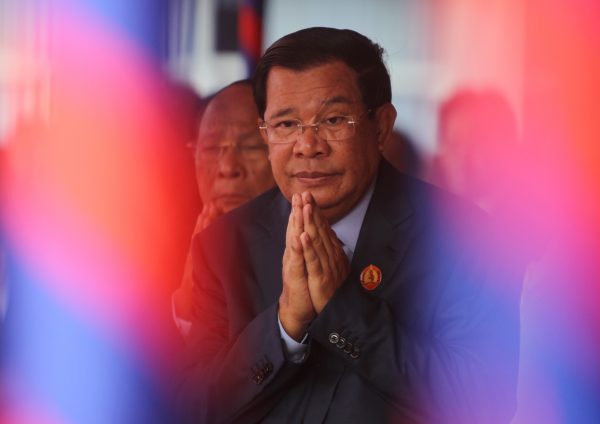This is equivalent to 15 per cent of Cambodia’s 2016 national budget and about half the total aid the country has received from the United States since the peace settlement of 1991.
Cambodia and the United States have been negotiating the debt since 1995 but have failed to come close to an agreement. The latest appeal by Cambodian Prime Minister Hun Sen likely stems from the Cambodian People’s Party’s (CPP) anxiety about its popular support ahead of the 2017 local government election. By exploiting public sentiment in support of debt cancellation, the CPP can position itself as the champion of the Cambodian people.
But the call also has merit. The Cambodian government has consistently argued that this is ‘dirty’ debt. It maintains that the Lon Nol government, which came to power in March 1970 through a US-backed coup, borrowed the funds to buy weapons that were used against the Khmer Rouge in the civil war of the early 1970s. The CPP also argues that Cambodia deserves debt forgiveness because of illegal bombing carried out by the United States from March 1969 until August 1973.
During this period, US warplanes dropped more than 500,000 tons of explosives on Cambodian villages along the Cambodia–Vietnam and Cambodia–Lao borders. Up to 500,000 lives were consequently lost. Moreover, the secret bombing campaigns and the US-supported coup created the conditions for the rise of the genocidal Khmer Rouge regime that killed almost 2 million Cambodians between 1975 and 1979.
The United States has consistently refused to completely cancel the debt but has long indicated that it is willing to negotiate a partial cancellation. US Ambassador to Cambodia William Heidt was recently quoted in local press as saying that the United States has, ‘never seriously discussed or considered cancelling the debt’ but is willing to ‘[work] out a deal that works for both sides’.
The deal that the United States has in mind is no doubt similar to the one it struck with Vietnam in 2000. That year, the United States enacted a repayment-for-assistance program after Vietnam signed a bilateral agreement in 1997 and resumed making scheduled payments of its debt. The US Congress created the Vietnam Education Foundation, into which is channelled about 40 per cent of Vietnam’s total debt payments to the United States. The Foundation provides opportunities for Vietnamese nationals to pursue graduate and post-graduate studies in the United States and for US citizens to teach in Vietnam.
It is certainly in US interests to settle the Cambodian debt as soon as possible. Cambodia has drawn closer and closer to China over the last two decades. As a small, poor and insecure state surrounded by two bigger, historical enemies, Cambodia needs China as insurance against Vietnam and Thailand. More importantly, Cambodia’s political regime increasingly depends on China for foreign capital to sustain the economic performance needed to maintain its political legitimacy. Foreign direct investment from China reached US$857 million in 2015 or roughly 61.1 per cent of total FDI. Chinese aid to Cambodia amounted to US$320 million in 2015 or roughly 30 per cent of total aid received.
Cambodia’s closer links with China benefit China’s strategic interests too. Cambodia closed Taiwan’s representative office in Phnom Penh in 1997. In 2010, Cambodia deported 20 Uyghur nationals and Chinese citizens to China. In July 2012, Cambodia prevented ASEAN from issuing a joint statement over the South China Sea issue. Once again in July 2016, Cambodia blocked any reference in an ASEAN statement to a UN-backed court’s ruling against Beijing’s claims to the South China Sea.
Data from the Council for the Development of Cambodia shows that the United States has granted US$1.13 billion to Cambodia since 1992. But no matter how much aid the United States has already generously given to improve the lives of Cambodians since the early 1990s, if the United States wants to regain influence in Cambodia, it needs to forgive the debt.
It is unclear why a compromise similar to the US–Vietnam deal has not been struck between the United States and Cambodia. In any case, Cambodia appears to bear little penalty for not repaying its debt. It can access the foreign capital it needs, mainly from China. It also borrows from the World Bank and the Asian Development Bank.
Given this, even partial repayment from Cambodia is unlikely. So the logical step forward is for the United States to write off the debt. But this is unlikely, especially under the Trump administration. The result will be to push Cambodia deeper into China’s orbit.
Kongkea Chhoeun is a PhD candidate at the Crawford School of Public Policy, The Australian National University.

